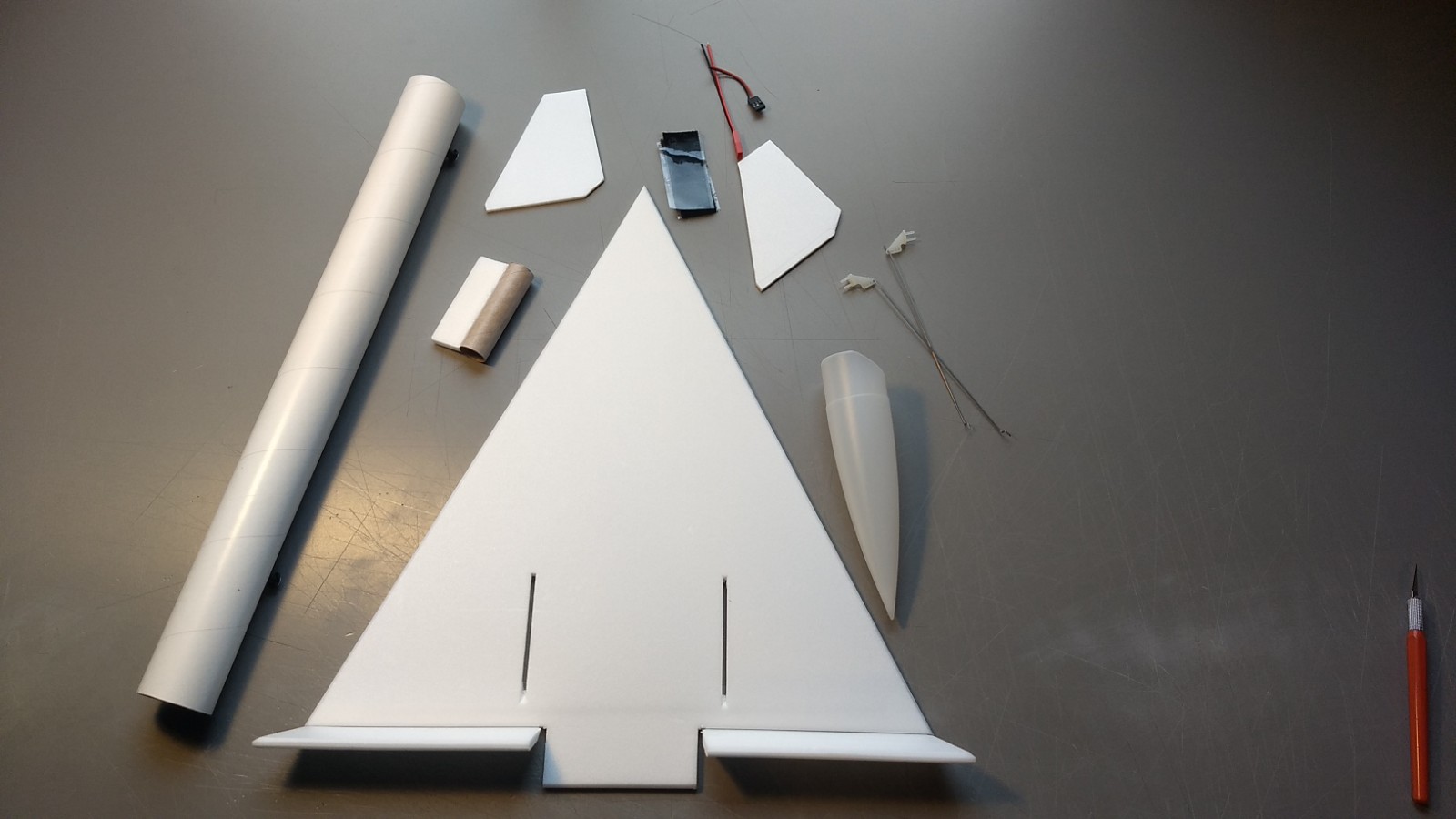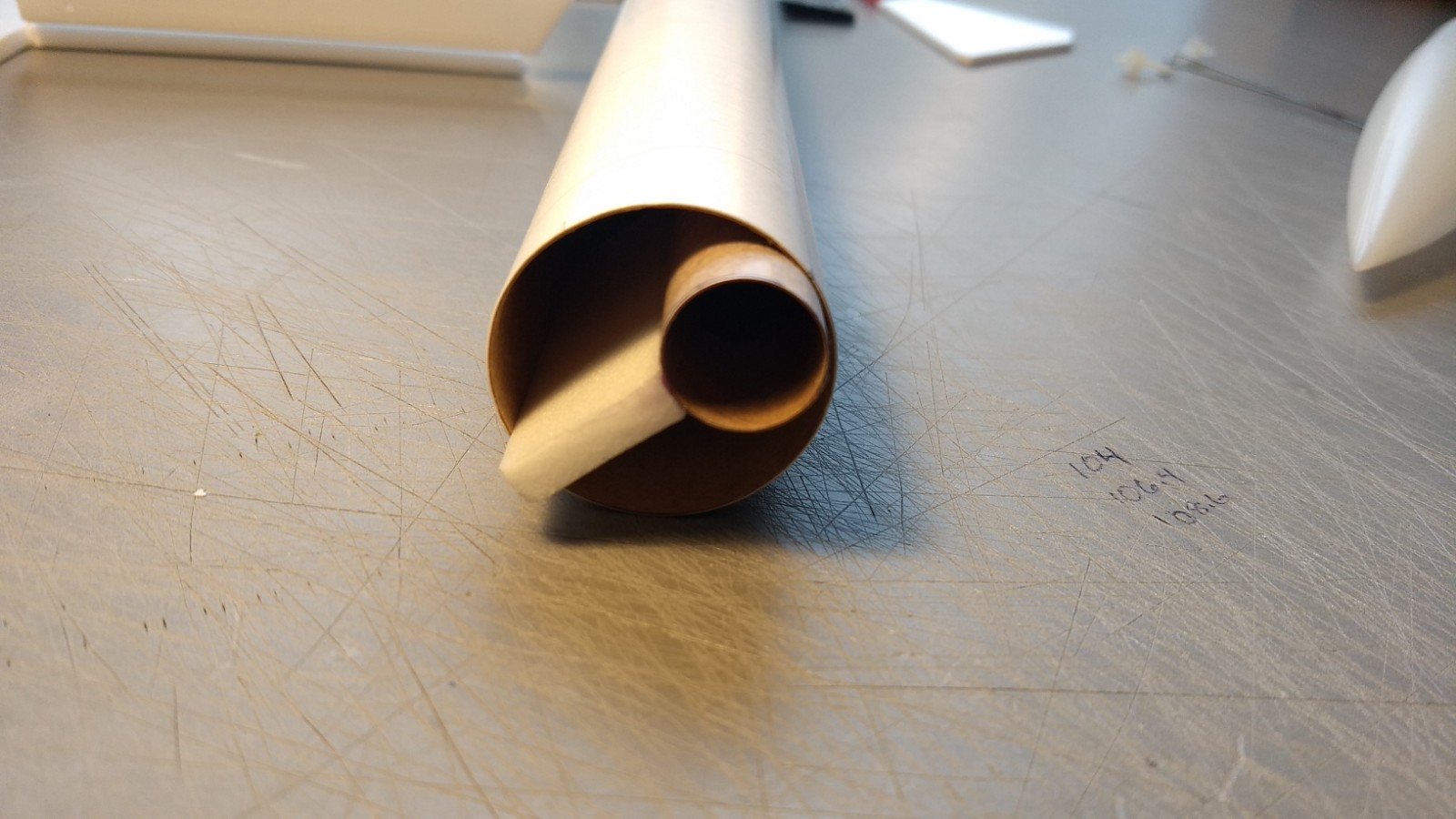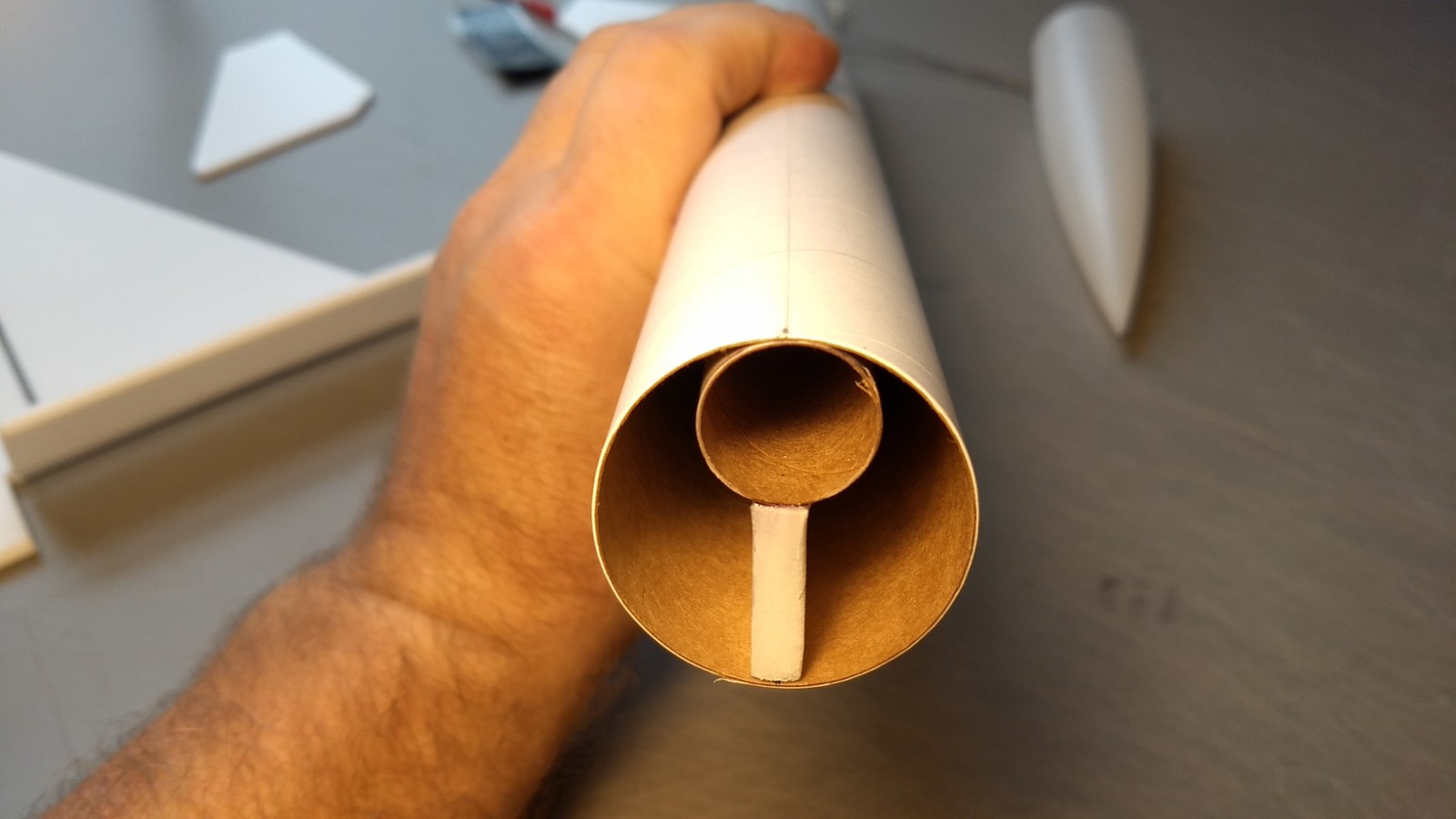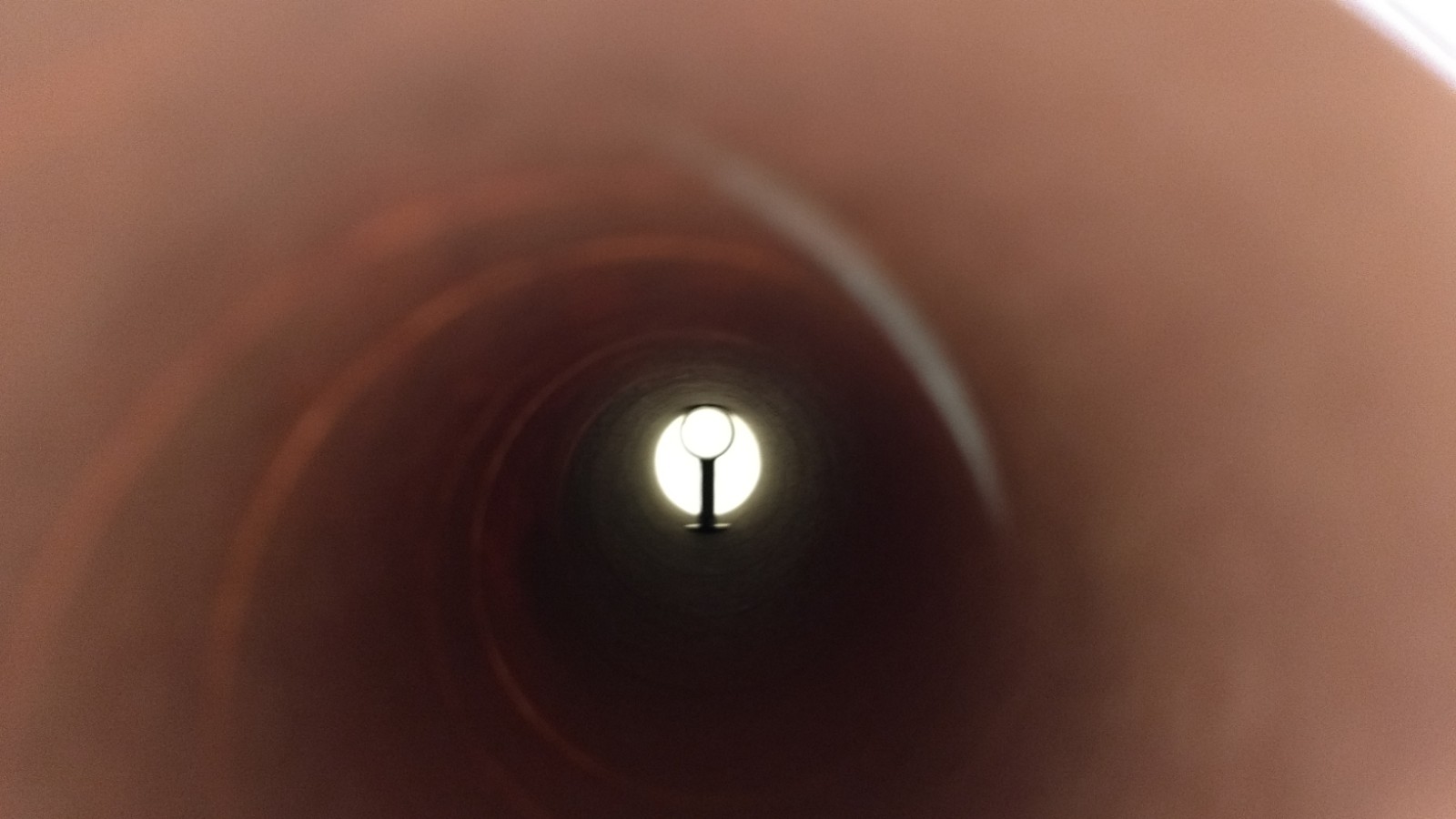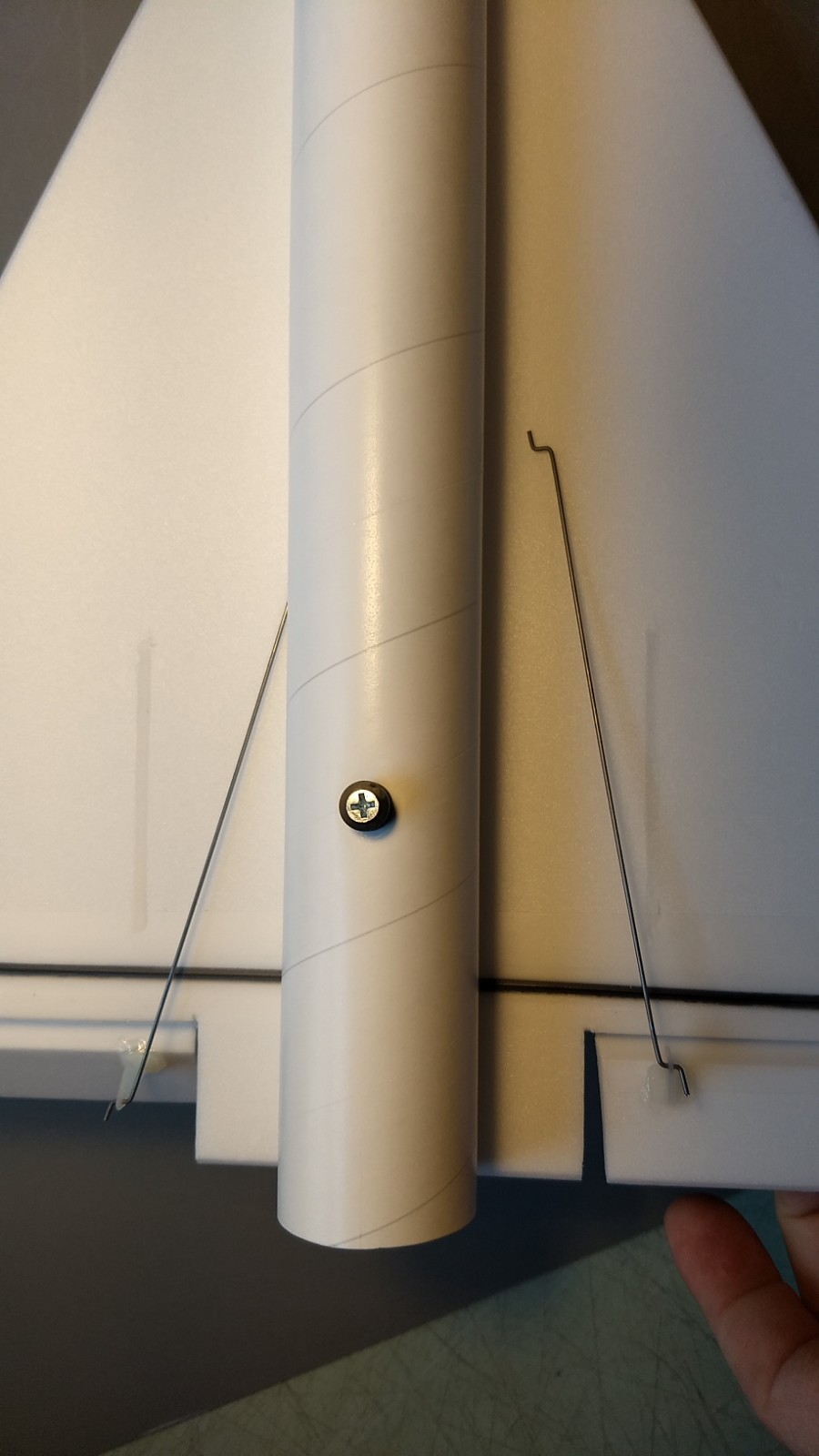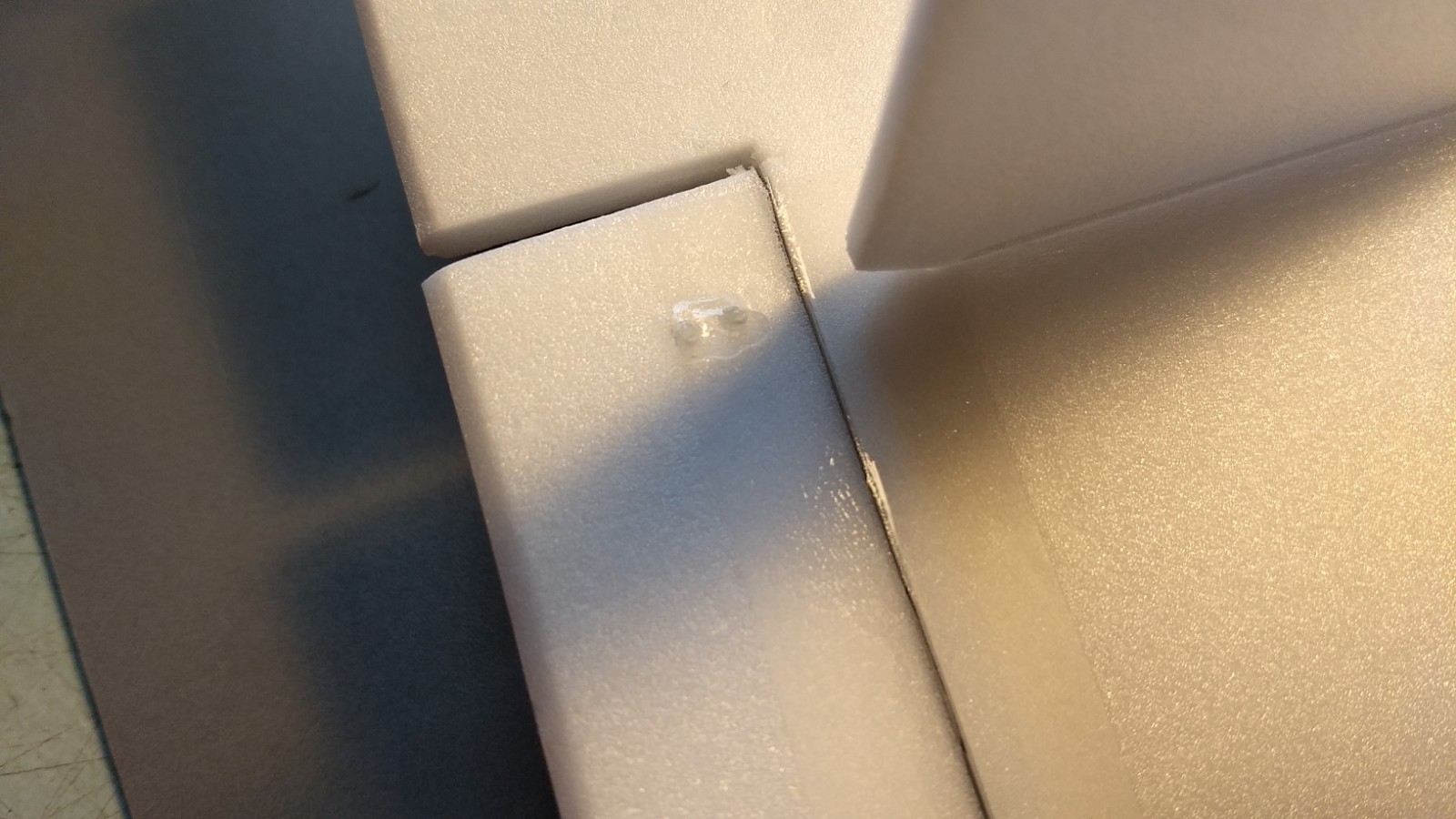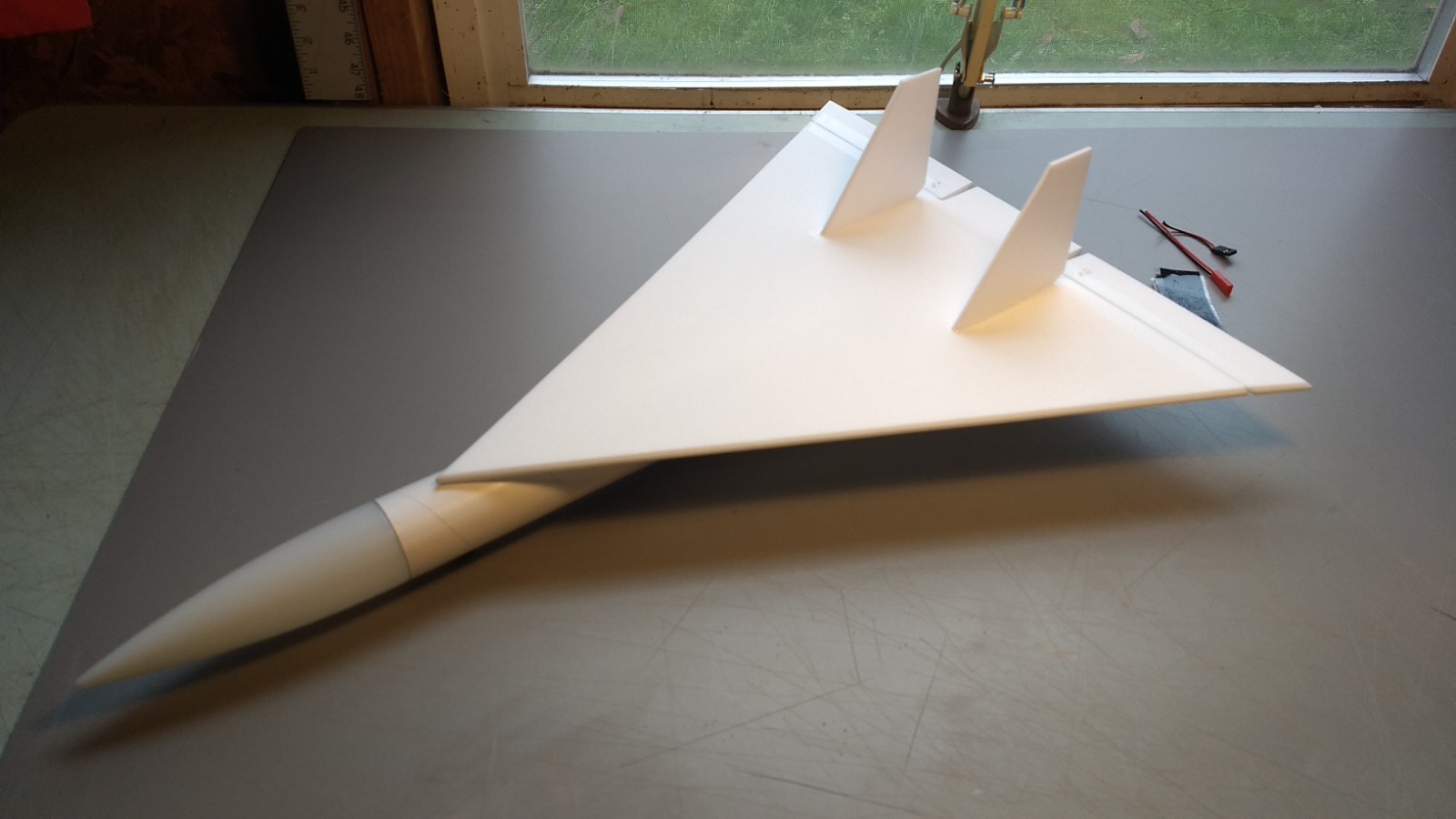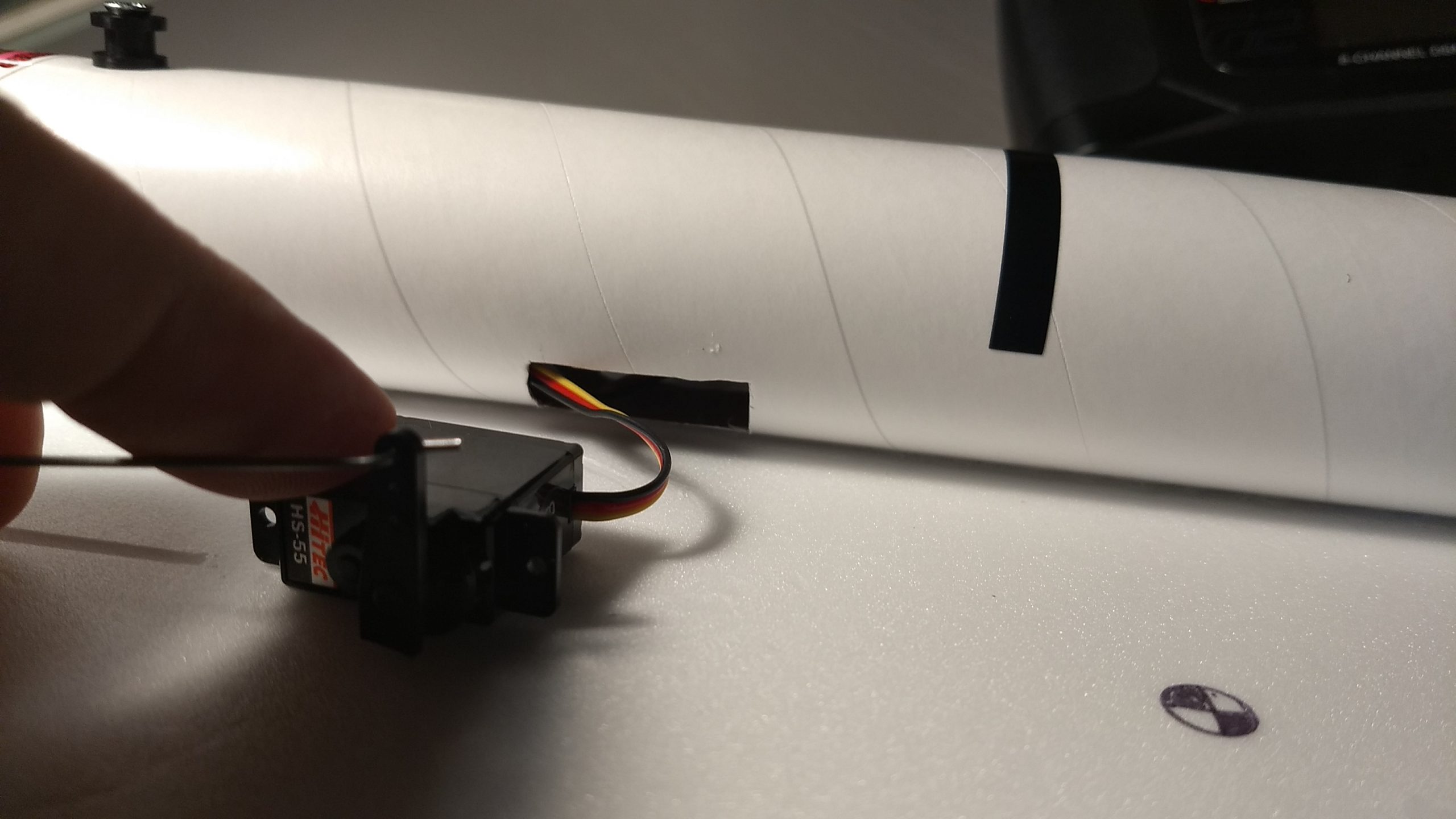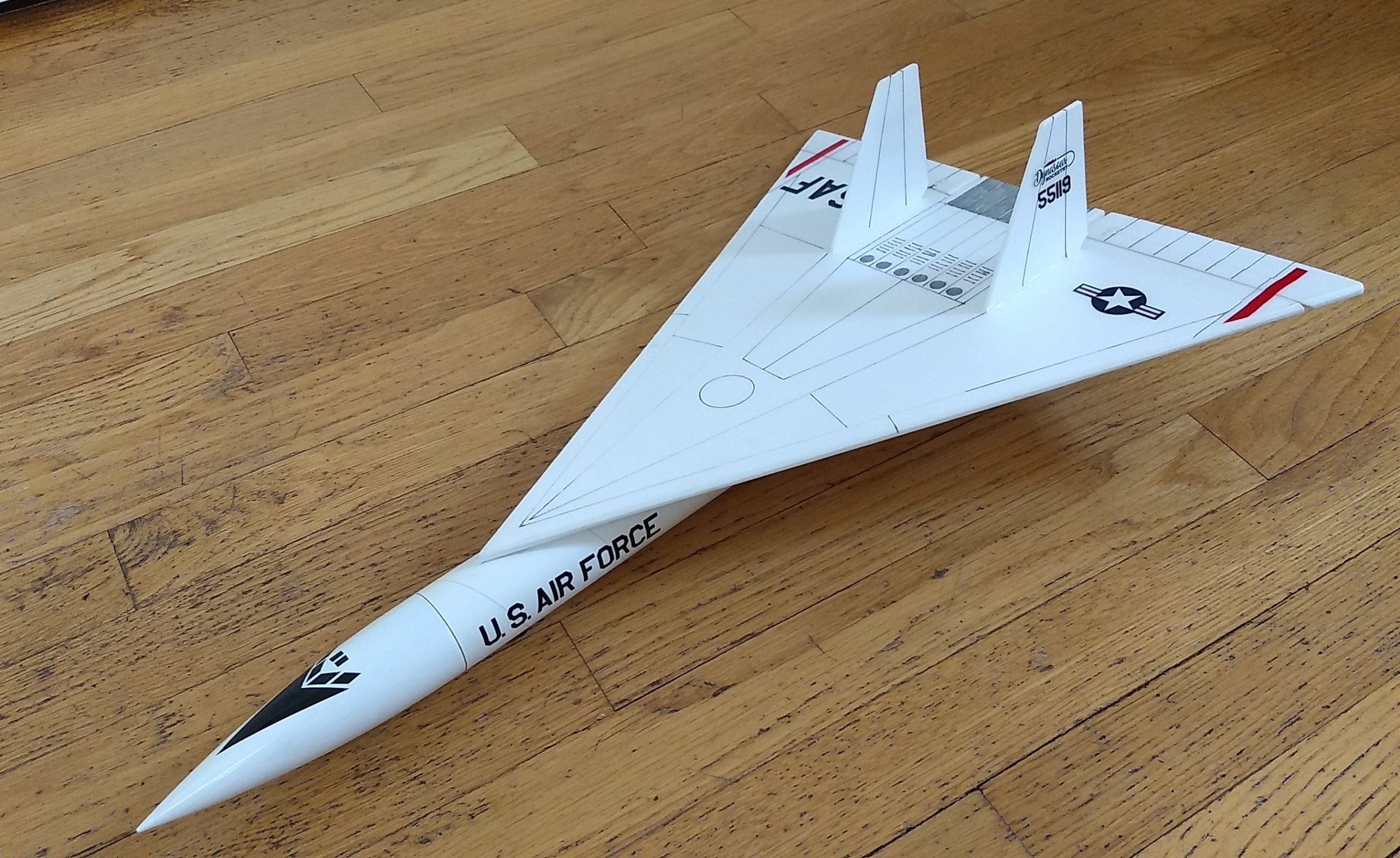
Valkyrie Rocket Glider Kit
The Valkyrie RC Rocket glider kit Rocket glider kit is based on the Mach 3 Bomber prototype of the 60’s, but simplified for ultra light weight. The wing spar and elevons are pre-installed, the wing is pre-slotted for the vertical stabs and rail buttons are installed in the body tube. The high mounted wing helps with stability in glide mode. It is designed for 18mm composite longburn motors and is a great looking simple to build kit. It features a plastic nose cone, 1.6″ white tubing for the body and 6mm depron wing and tail surfaces. You will need two 8 gram or lighter servos, two 12″ lightweight servo extensions, a receiver, and a small 500mah single cell lipo battery or smaller. You will need a transmitter with delta or elevon mixing. Specs: 23″ length, 15.5″ wingspan, 5.25 oz rtf, for 18mm D-2.3T single use motors. Hi quality cut vinyl decals can be purchased HERE:
CG location for rocket flight: 8.5” ahead of the rear end of the main body tube assembly with motor and battery installed ready for flight.
How to remove the spektrum AR-410 receiver case to save 3-4 grams of weight.
Please refer to the General Information Link above then read the instructions completely before starting assembly. The assembly photos are for general reference but may not include every step in the instructions. If you want hardcopy to work from, all you have to do is click/drag/select and copy all of the text below, open word and paste with “keep original format” and it looks exactly like it does online then you can print it.
Unpacking your kit:
The kits are packed to protect them in shipping, but the contents are fragile so unpack carefully. Carefully cut the tape holding the tubes in the box, then unwrap/lightly cut the plastic wrap to free the tubes, the spar may be packed in the tubes and the baggie with the little parts and nose cone will be in the tubes as well. Carefully cut the tape holding the cardboard wing protector in the box and carefully remove it, don’t pull hard or bend it. Then carefully cut the tape holding the cardboard top piece to the bottom. There may be some sticky tape holding the cardboard to the bottom cardboard piece, carefully peel it being sure not to bend anything. Once the top cardboard is free you can see the foam wing/tail parts, there are little fragile pieces in here, so unwrap carefully. It may be best to use an exacto to lightly cut the plastic wrap and carefully remove it without cutting into the foam. Make sure everything is free before you remove the pieces to avoid breaking anything. Kits contain one or two scrap pieces for repairs if you damage anything in construction or flight, just cut and patch in a spare piece of the foam if needed using foam safe CA+.
Welcome to the world of rocket boosted radio control gliders. This is not a model for a novice RC pilot, but anyone who is comfortable with RC flying of a medium speed model should be fine. Read through the instructions, look at the photos and be sure you understand the step before commiting to cutting or glue.
Valkyrie Rocket glider instructions
Identify all pieces, the kit should contain:
1 wing taped together
1 Nose Cone
2 vertical stabilizers
2 control horns w/pushrods
1 2.75″ long foam strips for centering the motor tube.
1 Body Tube
Motor mount
Velcro(for battery and rx/bec attachment)
2 Rail buttons with t nuts/screws
Lead weight
Spare depron
Notes before starting:
Reference to glue, CA, or CA+ means foam safe CA+, normal CA+ will melt the foam! Normally you need to use accelerator to get the CA to set on the foam since there is nothing for it to soak into and activate. Epoxy is not needed in this model. It is designed to be assembled ONLY with Bob Smith foam safe medium thick CA+ and accellerator or equivalent. Weight is critical and the model is designed for the thrust and flight loads. Weight in the rear end is bad and will require additional weight in the front of the model. It is better to move the battery and rx forward or rearward slightly before permanently mounting the rx and battery with velcro than adding any nose or tail weight.
I bevel the edges of the foam surfaces before assembly which helps reduce drag and makes the model look nicer. I simply use a sharp Xacto knife and a metal straight edge to cut a 1/16″ wide 45 degree bevel on the edges on both sides of the wing. Due to the thin-ness of the vertical stabilizers I did not bevel them. If you decide to sand the edges, use a block and a VERY light touch and do small areas at a time to avoid the paper catching the foam and tearing it. Do any shaping before assembly.
Assembly:
- If not installed for you install the t-nuts and rail buttons into the pre punched holes in the tube. The t-nut goes on the inside of the tube then slide on a washer, the collar and another washer on the outside and hold it in place with the machine screw
- Using a door frame draw a straight line on the motor tube. Glue the foam centering strip on the motor mount tube using the mark on the tube as a guide.
- Test fit the motor mount, It will slide into the rear of the tube. If you need to sand the tab glued on the motor tube so that it fits snugly and is even with the rear of the model. Use the center line on the wing to center the motor mount at the top of the tube under the wing and the bottom line on the inside of the body tube. View the motor tube from the front of the body tube, use the rail button to help align the motor mount straight. Once correct, apply fillets of glue on both sides of the foam tab and the motor tube and wait till it is set.
- Apply glue to the taped wing joint and lay it rightside up on a flat surface to allow the glue to set. then draw a line down the center of the wing on the bottom(the side with the spar visible.)
- Lightly sand the fuselage wing line and apply a squiggle of glue about 1/2″ wide to the body tube wing line and the center line of the bottom of the wing.
- Lay the wing onto the body tube making sure the rear of the wing is even with the rear end of the tube and the front and rear alignment lines are in line with the center of the wing. You want to be sure the wing makes full contact with the body tube and is set before you continue. I lightly taped the wing in place and then layed it upside down on a table making sure the rail buttons were kept vertical. Hold the wing down for several minutes till the glue is set.
- Apply some glue into the wing/body tube joint on both sides to make sure is is secure, I squeeze a bit in every inch or so.
- Test fit the vertical tail into the slots and make sure they fit. I pushed the front into the slot then slid it forward till it stopped then pressed the rear down into the foam. Glue them to the wing using foam safe CA+ by putting a fillet on both sides of the vertical stabs, making sure the tails are perpendicular to the wing and are straight.
- Glue each control horn/pushrod in place on the bottom of the control surface using the pre made holes. The control horn holes should be pointing toward the front of the model and the pushrod should be closest to the center of the model and angle inward toward the center slightly. There is a left and right pushrod, see picture for clarity. Repeat on the other side.
- Put some CA on the top of the control surface where the horn prongs stick through, this locks it in place
The basic construction is now complete.
Radio Installation
Note: Your radio needs to be configured for Delta mixing, this means that the servo arms will move the same direction during elevator stick movement and opposite for aileron stick movement. Connect your servos to the receiver one in the aileron connection and one on the elevator connection and apply power. Use a servo arm at least 9/16” long and with holes small enough that there won’t be slop with the pushrod wire when installed. I use the hole furthest out on the servo arm, to maximize movement. On some servos there are a long two-ended servo arm, you can trim off one end if needed to get sufficient length. Zero out any trim settings on the transmitter. The model once the motor has burned out is nose heavy so you want as much up elevator travel for trim/flare as possible.
- Connect a servo to each pushrod. If the pushrod is too tight, you can use twist an exacto knife in the servo arm hole to make it larger, but be careful and do not make it too large. Once connected, tape each servo in place so that the control surfaces are centered. Flip the model right side up and look at it from the rear. Moving the transmitter stick back(up elevator) should move both elevons up. Moving the transmitter stick to the right should move the right elevon up and the left elevon down. If you can’t get the servo reversing to give you the right polarity try swapping aileron/elevator inputs to the receiver or turning the servos over and swapping the servo arms to the other side of the output shaft. If that is correct, continue.
- Flip the model upside down and supported. Mark where the servos will need to be with the control surface level, then cut a pocket in both sides of the body tube to fit the servos. Attach the lightest shortest servo extension that will allow you to route the wire to the front of the model and route the servo lead into the body tube and out the front. Attach the servos to the receiver and connect the flight battery. With the radio still on, mount the servos recessed into the pockets. The servos may be attached to the model by directly gluing the servo to the wing with CA+ or a small amount of epoxy. With the radio still on, put a small amount of glue on the servo, being careful not to get any near the output shaft. And set it in place on the model in the servo pocket you cut keeping the control surface centered. Do the same to the other side. Make sure the glue is set before continuing.
- Flip the model back right side up. Make sure the control surfaces are centered, use trims if needed. Now measure the control surface movement. Full elevator movement should be 5/8” in each direction, aileron movement should be 1/4″ in either direction. Since the model will be nose heavy, extra elevon movement helps to give sufficient authority during glide.
- If you have a flap/elevator mix you can program up elevator to a switch setting. The model needs approximately 3/16-1/4” of up elevon during glide. You can also use flight modes to set individual elevator trim settings so that you get boost and glide elevator trim when you switch between flight modes. If you can’t set the up elevator trim to a switch on your radio you’ll have to manually put in boost and glide trim which is hard to do while flying the model.
- Use the included Velcro to attach the receiver inside the front of the of the body tube so that it doesn’t interfere with inserting the nose cone. I mounted it using a forceps to place it as far back as I could and still have the battery wire reach the nose cone, this helped me balance the model without adding tail weight.
- Use the remaining velcro to attach the battery inside the nose shoulder at the bottom.
- Use a black sharpie to add panel lines if desired
- If you use the stickershock vinyl, once applied, use a hair dryer on hot to soften the vinyl and press it down into the foam and cardboard surfaces and it will adhere very well. Make sure not to warp the foam especially on the vertical stabs.
- The nose cone plastic is a flexible type that may flake paint if it is flexed a lot or if tape is applied and pulled off. This is the only nose cone of this shape that is light enough to work with this model. I used Tamiya spray white gloss laquer and it seemed to adhere ok without a primer, but be very careful applying decals and removing the self adhesive backing paper, it may pull the paint. I pulled the individual windows off of the backing and applied each one by hand to avoid this risk. You may also just apply the decals straight to the nose cone and not paint it.
- I do not recommend painting the wing and body to save weight, if you do, do NOT use tamiya laquers, see the general instruction tab above and refer to the painting instructions to avoid melting the foam.
- Re-install the receiver and battery
- Insert your heaviest loaded rocket motor into the motor mount.
- Support the model upside down at the balance point indicated for boost. Glue pieces of the included lead weight in the nose or tail as needed to balance it. Do not try to fly the model with it balancing it behind this point. The adage is, a nose heavy model flies poorly, a tail heavy model flies once. If your model is nose heavy you may try removing the plastic case of the receiver to remove 3-4 grams and see if that helps avoid adding tail weight.
Flying: See the General Information link at the top for flying instructions. Be ready on the first few flights to keep the model straight till you have the trims set perfectly for boost and glide.
- Kit parts.
- Bevel the wing edges.
- Glue the centering strip to the motor tube.
- Test fit the motor mount in place.
- Motor mount inserted flush with rear of the model, tube aligned with wing line at the top and rail buttons on the bottom.
- Look through the front of the tube and align the motor mount straight using rail buttons as a guide and glue in place when correct.
- Install and glue the vertical stabs in place.
- Glue the pushrod/control horns in place, note there is a right and left, they will angle inward toward the model when correct.
- apply glue to the top of the horn prongs to lock them in place.
- Airframe completed.
- Pocket cut for servo
- Servo installed and wires routed out the front of the model.
- Receiver mounted inside tube, battery mounted inside nose cone.
- Completed Model
